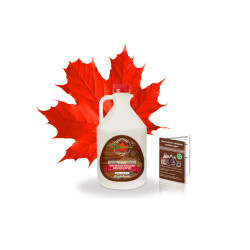It was found that antioxidant- ingredients in maple syrup - polyphenols inhibit the activity of the 2 enzymes involved in the occurrence of diabetes. The fact that this is a sweetener which can be a carrier such as a potential medicament against diabetes not worry scientists, since not all have the same sweetening composition.
In fact, if one examines the glycemic load (GL), also known as glycemic sweeteners louding will recognize that each of them is different, although all sweeteners are equally sweet taste.
Maple syrup - low glycemic load
Maple syrup has a glycemic load of about 43 corn syrup is 80 and glucose - 100. natural products such as honey has a glycemic load of 45.
Glycemic load gives us information on how rapidly a food causes blood sugar to rise. The higher it is, the more quickly and strongly raise blood sugar after consumption of the food. Since the type of sugar that is found in maple syrup also is sucrose, ordinary sugar as the question is why leading to different levels of glycemic louding. And the explanation is very simple. Because sucrose is actually a pure substance in maple syrup sucrose percentage is only 60, the rest is water, ie if a person swallows 10 g sugar absorbs 10 g sucrose. If you take 10 g maple syrup will take only six grams of sucrose. In this case, diabetics, although obviously antidiabetic its action should not go overboard with maple syrup.
Of course, there sweeteners indicator glycemic load have lower values than maple syrup - eg compressed juice from agave - he has a glycemic load of 11. The juice of the agave, unlike maple syrup comprises a large percentage of free fructose but it does not rise in blood sugar.
Fruit sugar in pure and concentrated form can cause severe health damage and in no way better than ordinary sugar households use. In this case, a low glycemic load itself should not be considered a guarantee of healthy food.





